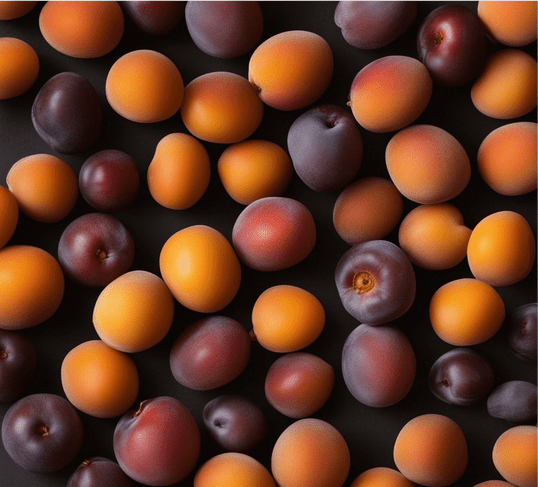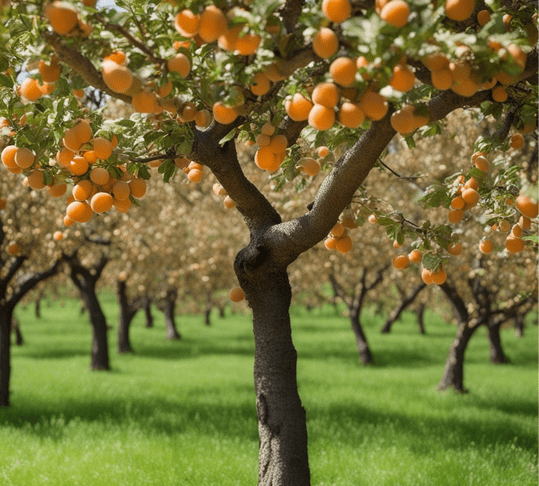Apricot trees can fall victim to various pests that can threaten the health and productivity of your tree and its delicious fruit. Knowing how to identify these pests, recognize their symptoms, and effectively manage or prevent infestations is essential for successful apricot tree care. In this comprehensive guide, we’ll explore ten common pests that can affect apricot trees and provide insights into their identification, symptoms, management, and prevention.
1. Aphids
- Identification: Tiny, soft-bodied insects, often green or yellow, found on leaves and shoots.
- Symptoms: Curling leaves, sticky honeydew residue, and sooty mold growth.
- Management: Prune affected branches, use insecticidal soap, or introduce natural predators.
- Prevention: Promote a diverse ecosystem to attract aphid-eating insects.
2. Scale Insects
- Identification: Small, flat, and oval insects attached to branches or leaves.
- Symptoms: Yellowing leaves, reduced vigor, and honeydew secretion.
- Management: Remove scales with a soft brush or apply horticultural oil in the dormant season.
- Prevention: Keep trees healthy and free of dust and debris.
3. Plum Curculio
- Identification: A small, dark weevil with a distinct curved snout.
- Symptoms: Circular scars or crescent-shaped cuts on fruit.
- Management: Shake the tree to dislodge beetles into a waiting cloth or use insecticide treatments.
- Prevention: Clean up fallen fruit to reduce overwintering sites.
4. Codling Moth
- Identification: Cream-colored caterpillar with a brown head.
- Symptoms: Holes in fruit, frass (insect waste) near entry points, and tunnels in the flesh.
- Management: Apply pheromone traps, prune infested branches, or use insecticides.
- Prevention: Remove and destroy infested fruit.
5. Leafrollers
- Identification: Larvae that roll leaves into protective shelters.
- Symptoms: Rolled or webbed leaves, reduced photosynthesis, and leaf damage.
- Management: Prune affected branches, handpick larvae, or use natural predators.
- Prevention: Keep the orchard clean and maintain good hygiene.
6. Spider Mites
- Identification: Tiny, spider-like pests that feed on leaves.
- Symptoms: Stippled, yellowed, or discolored leaves, webbing on the tree.
- Management: Apply insecticidal soap, increase humidity, or introduce predatory mites.
- Prevention: Avoid dusty conditions and over-fertilization.
7. Thrips
- Identification: Tiny, slender insects often with fringed wings.
- Symptoms: Silvering or bronzing of leaves, distorted growth, and flower damage.
- Management: Apply neem oil or insecticidal soap.
- Prevention: Maintain good orchard sanitation.
8. Japanese Beetles
- Identification: Shiny, metallic-green beetles with white tufts along their sides.
- Symptoms: Skeletonized leaves and damaged fruit.
- Management: Handpick beetles or use traps.
- Prevention: Plant trap crops away from apricot trees.
9. Birds
- Identification: Visibly seen feeding on fruit.
- Symptoms: Pecked and damaged fruit.
- Management: Use netting or scare tactics like reflective tape.
- Prevention: Employ bird deterrents early in the season.
10. Deer
- Identification: Evidence of deer browsing on leaves, shoots, or young branches.
- Symptoms: Severely damaged foliage, bark, and branches.
- Management: Use physical barriers like fencing.
- Prevention: Secure your orchard with proper fencing.
Regular monitoring, timely intervention, and good cultural practices are key to effectively managing these common pests of apricot trees. By identifying pest infestations early, implementing suitable management strategies, and adopting preventive measures, you can safeguard your apricot trees and ensure they produce healthy and delicious fruit.



